Severe water shortage irks Islamabad residents
Over 300 water shortage complaints lodged in Sector I-10 on Sunday alone
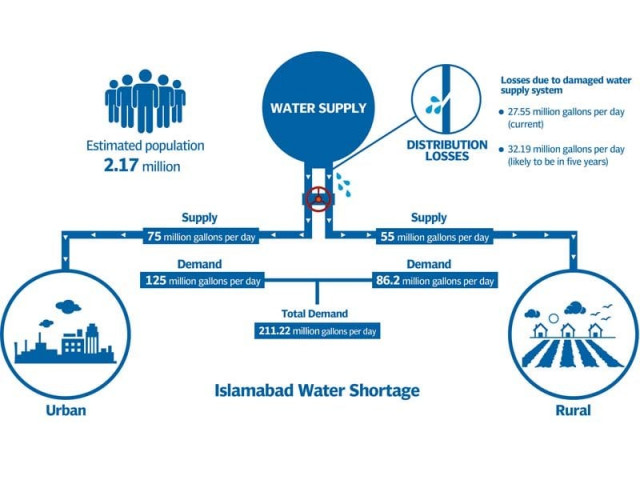
Over 300 water shortage complaints lodged in Sector I-10 on Sunday alone. DESIGN: NABEEL KHAN
“It’s the highest [number of complaints] during the ongoing summer season,” said an official deputed at the inquiry office located at I-10 Markaz.
All the complainants have requested the CDA for supply of water through water tankers.
Pakistan may run dry by 2025: study
The CDA, the official said, would be able to entertain only 60 to 70 complaints out of the 305 lodged.
An acute shortage of clean and safe drinking water is among one of the major challenges the city’s first-ever local government will inherent from the federal government.
Though every year water supply situation aggravates during the summer season but it affects badly the residents of I-series sectors, where water is being supplied through tube wells installed in the Margalla Hills National Park Area.
Due to excessive load shedding in summer, the water supply affects these areas giving rise to water shortage complaints.
Demand and supply
The estimated population of the Islamabad Capital Territory (ICT) at present is about 2.170 million that includes urban as well as rural population, and the demand for water to meet their needs is about 211.22 million gallons per day (mgd); as worked out by consultants engaged by the CDA during 2009.
Estimated demand in urban areas – consisting of all residential sectors and model villages – is 125 mgd, while, estimated demand in rural areas is 86.2 mgd.
The currently available sources of water in Islamabad have been tapped optimally but they are insufficient to fulfill the existing demands.
Water shortage: Residents of Haripur voice concern
Neither the government nor the capital’s civic agency seem willing to focus on this very basic issue of the residents of Islamabad.
Water needs for rural areas stands at 86.2 mgd against which almost 55 mgd is being supplied through 60 schemes operated by the ICT’s Local Government and Rural Development (LG&RD) through committees established at the union council-level to meet the demand.
In rural areas, the average shortfall per day is 31.2 mgd. In areas such as Bhara Kahu locals routinely steal water from the main supply line coming from Simly Dam.
The bigger problem is in urban areas.
In urban areas, the demand is 125 mgd, while the actual supply here is only 75 mgd.
Due to decades old and rusting underground water supply system, some 27.55 mgd of supplied water goes waste.
Water in urban areas is being supplied from four main resources. Simly Dam currently supply 36 mgd or 48 per cent of the total water supplied; Khanpur Dam, 9 mgd or 12 per cent of the supply; tube wells, 26 mgd or 35 per cent of the supply, and small water works provide four mgd or five per cent of the supply.
In sectors, I-8, I-9, I-10, I-11, H-8 and H-9 all the supplied water comes from tube wells.
Shortage of water arises in these sectors especially during summer.
Hours long loadshedding has made it difficult for the city managers to run tube wells uninterrupted to ensure routine supply.
Water scarcity: RCB forms committee to sort out issue
On June 2, CADD Minister Tariq Fazl Chaudhary had informed the senate that underground water level in Islamabad was decreasing continuously.
However, he did not produce any data showing the exact annual decrease.
Way forward
Chaudhary has said that water shortage in Islamabad can be overcome by completing construction of the proposed Chirah Dam, installation of new tube wells in the national park area, and by executing “Conduction of water from Indus River system” project.
The dam was conceived in the mid 1980s.
The dam, which will be constructed on Soan River near Chirah village, is expected to provide nearly 15 mgd water to Islamabad and Rawalpindi.
The federal and Punjab governments are supposed to complete the project through Public Sector Development Programme.
However, there is no physical progress on the project as yet.
The multi-billion-rupee project was conceived in 2004.
Under the first phase of the project, when completed, almost 200 mgd of water will be available for the twin cities.
Sindh has recently agreed to share 74 cusecs of water for Islamabad and Rawalpindi from its share of water under the 1991 Water Apportionment Accord.
For years, Sindh has declined to allocate water share for the federal capital on the grounds that the “province was [itself] facing acute water shortage”.
However, the project is still on paper and requires federal government’s attention.
Published in The Express Tribune, June 6th, 2016.


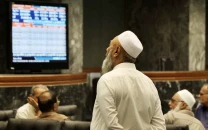

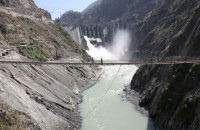
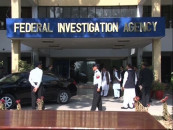
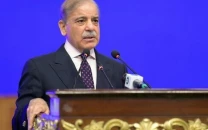



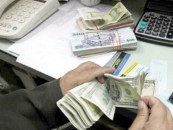








COMMENTS
Comments are moderated and generally will be posted if they are on-topic and not abusive.
For more information, please see our Comments FAQ